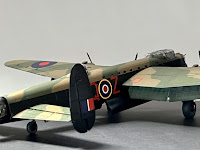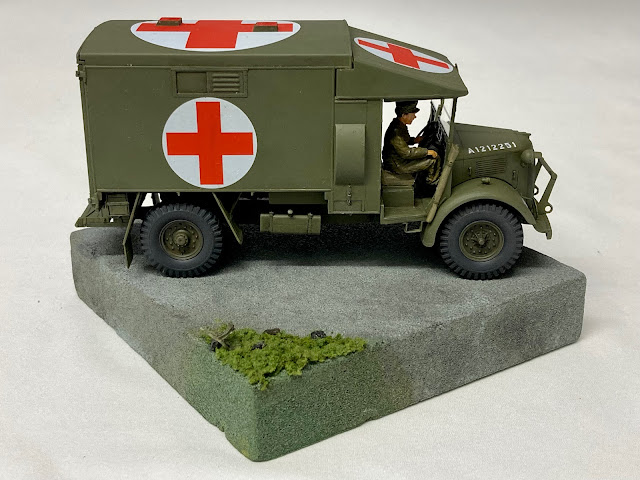On the night of 16 to 17 May 1943, Lancaster AJ-T (T-Tommy) was 617 Squadron’s reserve aircraft, prepared with Barnes Wallace’s bouncing ‘Upkeep’ bomb, for Operation Chastise, the Dambuster raids.
I decided to finish my Airfix 1:72 scale Avro Lancaster B.III (Special) Dambuster in the markings of T-Tommy, rather than the more famous G-George flown by 617’s Squadron Leader, Guy Gibson, in recognition of the recently departed “last surviving Dambuster”, Geroge ‘Johnny’ Johnson, the aircraft’s bomb aimer.
Having been detailed to attack the Sorpe Dam and flying the longer, northern route, Flt Lt Joseph Charles "Big Joe" McCarthy (an American serving in the RCAF) and crew, with four other aircraft of Formation No. 2, were to be the first of the 3 waves and 19 Dambusters to take off. After McCarthy's bomber developed a coolant leak, the crew had to take T-Tommy, the reserve aircraft, and followed on half an hour later.
Being an embankment dam , with concrete core covered in soil, the Sorpe dam was the one least likely to be breached, unlike the Eder and Möhne concrete-and-steel gravity dams that were so successfully breached. The attack on the Sorpe also differed from the previous ones in that the topography of the valley required the approach to be made along the length of the dam and not at right angles over the reservoir. The 'Upkeep' bomb, therefore, had to be dropped on top of the dam rather than being spun and then bounced on the water. The specialist bombsight developed especially for the raid would also be of no use. It is also amazing that the five crews detailed to attack the Sorpe Dam received their briefing on the afternoon prior to the raid.
None of the other 4 Lancasters of Formation No. 2 made it to the dam, and so McCarthy at the controls of T-Tommy was the first to arrive. McCarthy made nine attempted bombing runs before bomb aimer George “Johnny” Johnson, was sufficiently satisfied to drop the 'Upkeep' bomb on the tenth run. The bomb exploded but only a section of the crest of the dam was blown off; the main body of the dam remained. The planners of the Operation had estimated that it would take 5 of the ‘Upkeep’ bombs placed correctly to weaken the dam sufficiently for water pressure to complete the break. Only McCarthy and one other aircraft, from the Formation No.3, made it to the Sorpe with their bomb. Even a second British Operation on 15 October 1944 with five-ton Tallboy bombs failed, leaving behind only several huge craters and causing minor spillage.




















































